We need your consent to use the individual data so that you can see information about your interests, among other things. Click "OK" to give your consent.
ASTM D1240-14
Standard Test Methods for Rosin Acids Content of Pine Chemicals, Including Rosin, Tall Oil, and Related Products
STANDARD published on 1.7.2014
The information about the standard:
Designation standards: ASTM D1240-14
Note: WITHDRAWN
Publication date standards: 1.7.2014
SKU: NS-16732
The number of pages: 4
Approximate weight : 12 g (0.03 lbs)
Country: American technical standard
Category: Technical standards ASTM
The category - similar standards:
Annotation of standard text ASTM D1240-14 :
Keywords:
fatty acids, Glidden method, pine chemicals, rosin, tall oil, tall oil fatty acid, tall oil rosin, Wolfe Method, ICS Number Code 71.080.40 (Organic acids)
Additional information
| Significance and Use | ||||||||
|
4.1 This is a revision of the method for measuring rosin acids content combines the three major ways of determining the rosin acids content of pine chemicals products into a single method. 4.1.1 For materials containing less than 15 % rosin, the modified Glidden procedure has gained acceptance. For materials containing more than 15 % rosin the modified Wolfe Method is preferred. The modified Wolfe and modified Glidden procedures differ only in their details. They have been combined here into a single procedure. This procedure can be run using either a potentiometer or an internal indicator to determine the end point of the titration. Use of a potentiometer is preferred and is the referee method. Use of an internal indicator is the principal alternative method. They will be referred to as the Potentiometric Method and the Internal Indicator Method. |
||||||||
| 1. Scope | ||||||||
|
1.1 These test methods cover the determination of rosin acids in tall oil, tall oil fatty acid, tall oil rosin, and other pine chemicals products. 1.2 These test methods may not be applicable to adducts or derivatives of rosin, fatty acid, or other pine chemicals products. 1.3 The values stated in SI units are to be regarded as the standard. The values given in parentheses are for information only. 1.4 This standard does not purport to address all of the safety concerns, if any, associated with its use. It is the responsibility of the user of this standard to establish appropriate safety and health practices and determine the applicability of regulatory limitations prior to use. |
||||||||
| 2. Referenced Documents | ||||||||
|
Similar standards:
Historical
1.1.2011
Historical
15.8.2013
Historical
15.8.2013
Historical
1.8.2013
Historical
1.8.2013
Historical
1.4.2008


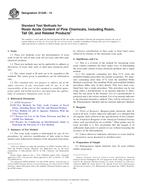
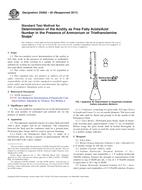 ASTM D5562-95(2011)..
ASTM D5562-95(2011)..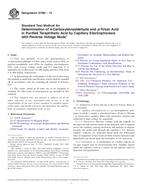 ASTM D7881-13
ASTM D7881-13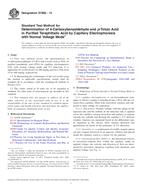 ASTM D7882-13
ASTM D7882-13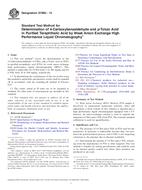 ASTM D7883-13
ASTM D7883-13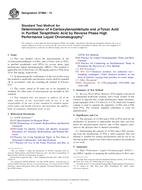 ASTM D7884-13
ASTM D7884-13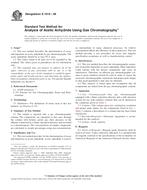 ASTM E1616-08
ASTM E1616-08 Cookies
Cookies
